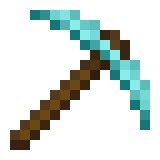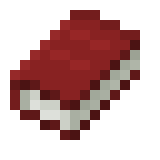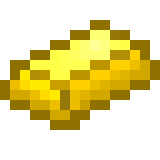Reviewer: John B.
Developed By: Nippon Ichi SoftwarePublished By: NIS AmericaCategory: Action, Role-Playing, Strategy
Release Date: 03.26.19
Price (at time of review): $39.99 (physical & digital)
Buy The Princess Guide from the Nintendo Switch eShop here.
Buy The Princess Guide from Amazon here.
Despite having a word in common and rhyming, The Princess Guide for the Nintendo Switch has nothing to do with The Princess Bride. Unfair, arbitrary comparisons based on coincidence notwithstanding, Princess Guide has plenty to recommend it. It’s a 2D beat-em-up game with light adventure and role-playing elements, sort of like a Dynasty Warriors game. It’s not really for everyone, but if you’re looking for a game with a colorful, sharp, anime-inspired aesthetic and a ton of replayability, keep reading.
The Story Guide
You play as a revered master of the warrior’s arts, traveling the world looking for material for your newest book. On the Relic Islands live four princesses, each in need of a tutor to help them reach their full potential as rulers. Liliartie, princess of the Alixon Kingdom, is a straightforward, energetic young woman who needs someone to help her control her impulsive nature. Veronica, princess of the Rusty Magic Guild, is looking for a teacher to further her quest for world domination. Monomaria, who is more of a duchess than a princess, is looking for someone to help her restore her family’s honor and position within the Mercantile Trade Coalition. Alpana, high priestess of the North Kamara Faith (and also a dragon in addition to an anime princess), is seeking the strength to spread her message of peace to the whole world.
You play through a small introduction with each princess, and then once you’ve cycled through them all, you choose the princess whose story you will see through to the end (the game has a New Game Plus mode that lets you play through the other princesses’ storylines later). Each princess has a unique, if somewhat stereotypical, anime princess personality. Liliartie is impulsive and gluttonous, but honest and sincere. Veronica is conceited, selfish, and childish, but she cares deeply for her friends. Monomaria is stern and unyielding, but dedicated to her family. Alpana is kind and serene almost to the point of nausea, but hides a dark secret. Still, each scenario is well-written and the princesses are likable enough that even the hardest-hearted players will find themselves invested in their journeys.

The Map Guide
The majority of the storyline and character management in The Princess Guide takes place on the world map. The map consists of dozens of different points of interest connected by several paths. It looks kind of like the map from Final Fantasy Tactics and similar games, just with actual icons instead of dots to denote the different locations. The big problem is that most of the nodes don’t actually do anything. It’s a fairly big map with lots of locations, but except for the Base City or any node that has a mission, none of them have any real significance. Every node is revealed at the beginning of the scenario, so it’s not like there’s any exploration to do or anything. Occasionally a treasure chest will pop up, or a monster will appear and roam from point to point, but overall there isn’t a whole lot of purpose to the world map except grinding.
Moving around the nodes causes time to pass. A clock in the upper left corner marks off time, with each bar on the clock measuring one hour. Most optional missions will have a timer associated with them, requiring you to begin the mission within a certain timeframe. Some story missions will spawn several monsters on the map which will need to be eliminated within a certain amount of time. Finally, whenever you dispatch a squad, it has a limited amount of AP which is expended as it moves around the map. When the AP runs out or when you recall the unit to your Base, you have to wait five hours to dispatch them again.
Personally, instead of the randomly generated roaming monsters as your main option for grinding, I would have preferred each node on the map to be an explorable or visitable location. It could have added shops on the cities and forts and battle areas on the rest. As it sits, the world map feels like a big screen of wasted potential. The character progression system doesn’t require too much grinding, but there are a few things that would have been made easier and less tedious with more regular access to battles.

The Base Guide
Your Base city is where you handle all of your character and squad management abilities. The Squad Management screen lets you recruit new captains and fill their team with soldiers. Each captain has certain unit types they can recruit, but both the captains and their soldiers all fall within four major attack types; melee, ranged, winged, and magic. There is a rock-paper-scissors type of hierarchy to the attack types, but I honestly didn’t feel like they affected me all that much during the game. The Workshop/Weapons Menu lets you equip and enhance weapons or buy items. Weapons can be enhanced just by spending tons of money or through a combination of learning certain skills with your princess and spending slightly less money. Not every weapon can be enhanced, though. The shop lets you buy items for use on the map screen for restoring HP, AP, or boosting attack/defense for the next mission. Items are unlocked in conjunction with your princess learning different materia (more on that in the next heading).
Finally, the Training Grounds let you upgrade your player character. The skill upgrades let you use skill points gained by teaching materia to your princess to upgrade your stats or unlock new abilities. Through this menu you can also replay the battle-related tutorials to refresh yourself on the game’s mechanics or look at the help screens to remind yourself how the non-battle stuff works. The menus are well laid-out and intuitive, which is good for easing into the game. The menus are all available from the beginning of the game, too, which is cool; the game doesn’t hold its coolest features back for later, like some games do.
The Teaching Guide
The final activity done through your base deserves its own heading, and it’s where the game derives its name. The Princess Training menu lets you use Materia learned and unlocked during combat to increase one of your princess’s five stats; strength, wisdom, spirit, moral, and faith. The different stats increase the princess’s attributes during combat, as well as unlocking new units that your main character and princess can both recruit into their squads and new passive skills that increase your princess’s effectiveness in combat. The princess can only learn new abilities if she has enough capacity, which is measured by a small heart meter with three bars. Clearing story missions is the only way to replenish capacity.

Materia is first unlocked during combat, either by defeating certain enemies or capturing relics (more on that in a minute). There are two different types of Materia, and their type determines what you need to do to learn it in order to teach it to your princess. Knowledge Materia is learned by “Direct Guidance,” which is where you praise or scold the princess for her actions. Direct Guidance occurs mostly during combat, and we’ll get to that in the combat section, but it can also happen during cutscenes. Bonus Materia is learned exclusively during combat; you must fulfill the requirements listed to learn it. Each Materia raises one or more of your princess’s stats by a certain amount, and possesses a rating of one to five stars. The number of stars determines how many skill points your player character receives when teaching a Materia to your princess.
The Materia system is a cool way to raise your stats, but you can only equip one of each type of Materia to learn at a time. So, if your task is to capture a certain type of relic a certain number of times, it can take forever to actually find enough. And, while you’re chasing one Bonus Materia down, you might fulfill the requirements of other Bonus Materia, but since those ones weren’t equipped, you don’t get to learn the Materia. You can only change your equipped Materia when your princess is in your Base, too, which adds more steps to an already-inconvenient system. When you do learn a Materia the game auto-equips the next one on the list for you, so there’s that, but again, you might not be in a position to fulfill that Materia’s requirements for another few battles.

The Combat Guide
Combat mostly consists of running around and spamming the attack button. You also have a dash, a knockback attack, and a special EX attack that changes depending on what weapon you have equipped. In a more interesting combat mechanic, you also have three squads of soldiers to support you that you can command. Different soldier types have different attacks. Some soldiers shoot sort-of slow-moving projectiles, so they’re kind of useless unless you’re in close. Some have a faster-moving but extremely limited-range attack, which, again, is useless unless you’re in close. Finally, some soldiers have a dash attack, which has the best range and speed combination of any unit type. All soldier types also have their own EX attack, which is mostly just a souped-up version of their regular attack, and a charge attack, which is like a souped-up version of the dash attack some soldiers have. The problem is that each unit only has a certain number of command points to use their EX or charge attacks, so you have to use them wisely.
Many enemies, especially bosses, are tough to get close to, making soldier attacks that require you to get in close a dicey proposition. The payoff is worth the risk, though, as your soldiers’ attacks will cause your enemies to enter Break mode, which stuns them for a few seconds, allowing you to wail on them without fear of repercussions. This is why I prefer soldiers with a dash attack; you can keep your distance and stun your opponents pretty regularly, minimizing your risk. Sometimes there are a lot of enemies on the screen, and when they’re all swarming around you it can be hard to see where you are or who you’re hitting. Being able to hang back and pick off your enemies one at a time is a great way to avoid dying without even knowing where you are on-screen.

Levels are littered with Relics, with you can send your soldiers to capture for your use. By default, most relics will auto-attack you if you get too close – but only if they’re an offensive relic. Mana Towers replenish your health, and are almost the only way to restore health during combat, so they don’t do anything until you activate them, but the rest of the relics, including cannons, archer statues, lava-spewing skulls, and flowerbeds from Hell, will attack if you get too close. Once you capture them, however, you can let them loose on your enemies – if you’re close enough to activate them and have enough charges left, that is. You can only have one relic active at a time, and you can’t reactivate a previously-captured relic even if it had charges left, so managing your captured relics well is important.
The Audiovisual Guide
The Princess Guide has a strong sense of art direction. The overall color palette is bright, making for a visually inviting game. The anime art style the game adopts works well across the game’s range of settings; from the visual novel cutscenes with their hyper-animated character portraits to the adorable chibi character models in the battle sequences, the game’s characters are attractively created and brimming with personality. The game is fully voiced in Japanese, furthering the game’s overall feel that you’re playing an anime. The music encompasses a lot of different genres, but it’s generally jazzy and upbeat, reminding me (in the best way) of the music from the Persona series.

The Concluded Guide
There’s a lot to like about The Princess Guide. It has a bright, cheery, charming atmosphere with some great music and cool visuals. The combat is simple to understand, and the character progression systems are similarly easy to master. Unfortunately, that ease of understanding is at least in part due to a relative lack of depth. It took me around thirteen hours to beat one princess’s storyline, including postgame content, and by the end I was finding that the combat was becoming repetitive and a little stale. I’m not sure it would have kept my interest for a second playthrough. The Materia system is cool, but unlocking some of the higher-level Materia can be more tedious or frustrating than rewarding, especially when you notice that you met the requirements for learning a different Materia but didn’t have it equipped. Still, the characters are fun to hang out with and their journeys are worth taking, so I can still say that The Princess Guide is a game worth playing.
Score: 7/10
Buy The Princess Guide from the Nintendo Switch eShop here.
Buy The Princess Guide from Amazon here.
Follow Nippon Ichi Software
Follow NIS America
*Review Code Provided by NIS America
Categories
Recent Posts
Tags
#Broforce #dev #DRIVE #FE #indie #indies #Kickstarter #kickstarter #Minit #nindies #Nindies #Nintendo #NintendoSwitch #Owlboy #RaceDieRun #Switch #SwitchCommunity #switchcorps #SwitchCorps #SwitchCorps #Switchiversary #SwitchLewd #SwitchLewds #Switchruary #Twitch #videogames #VitaIsland #YouTube




Leave a Reply